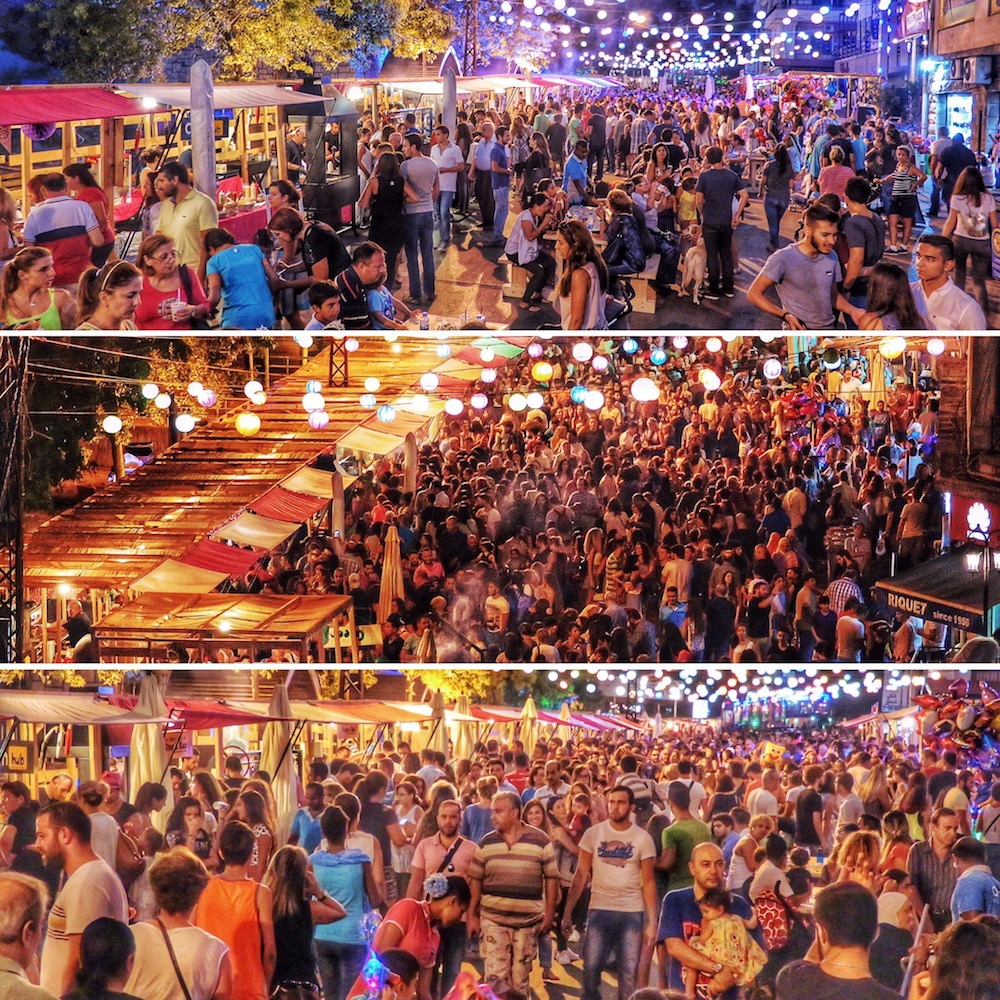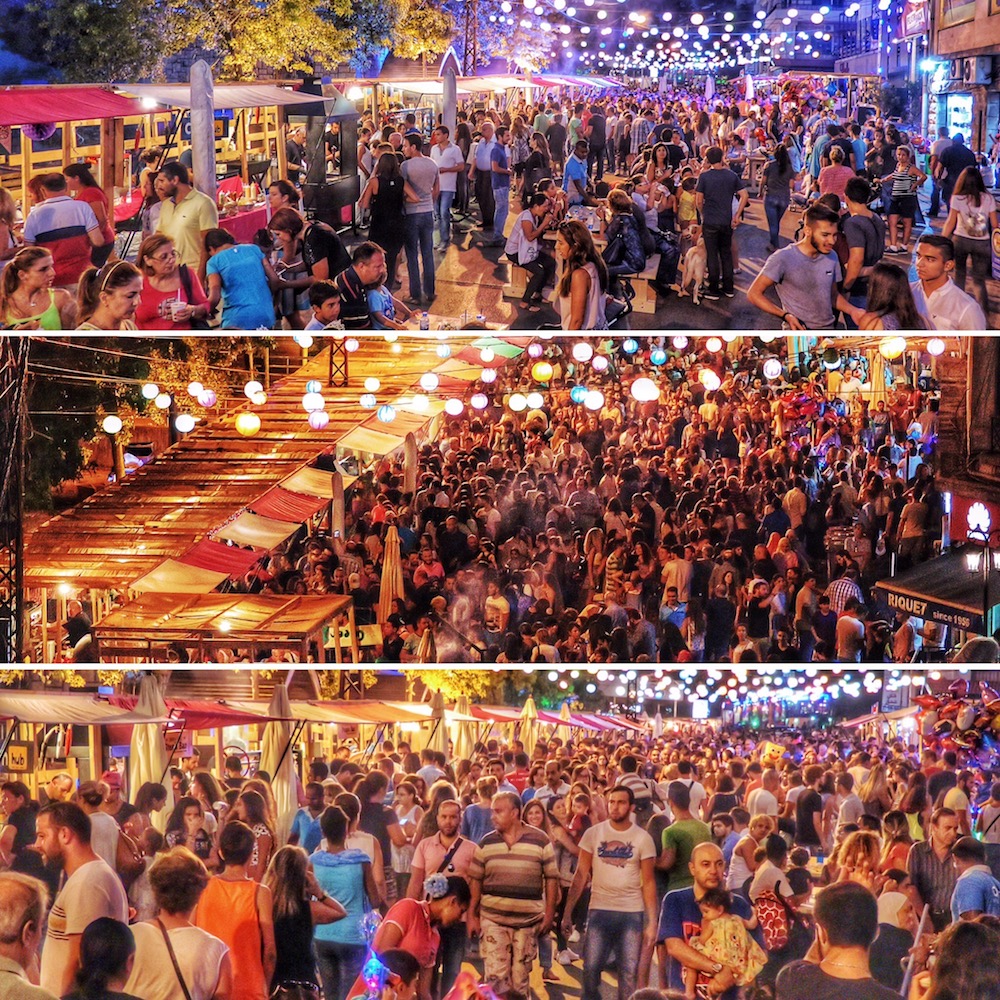The Lebanese have once again jumped on the foodie bandwagon. Like so many other popular trends, the street food business is the latest version of a long-standing part of Lebanon’s culinary culture. Today, a new generation of street-food lovers is lining up at food trucks and food stands like never before.
The street food sector has swept the country, appealing to the young and old generations alike and attracting tourists. It is considered to be a very competitive and oversaturated sector, serving a small population. This sector can be divided into two main parts: food stands and food trucks.
While there is a lack of data regarding the Lebanese market size of street food, the size of this market in the United States is estimated to stand at $1.2B.

Food Trucks
Food trucks, meals on wheels, or mobile restaurants are a microcosm of restaurants that can relocate between cities. These mobile restaurants serve a limited menu, ranging from fast-food to gourmet. The craze started with ice-cream trucks and evolved to an on-board kitchen preparing dishes from scratch.
The food truck trend continues to grow as a few entrepreneurs use them to enter the restaurant industry, while others use them to spin off brick-and-mortar operations.
There are many reasons for starting as a food trucker, rather than opening a traditional restaurant. Mr. Elie Ghorayeb, Operation Manager at Wrap’n’Roll, stated that a mobile restaurant was a good and trendy way to promote the diner’s brand. Other than in events and festivals, Wrap’n’Roll can be found in Broumana and Hazmieh, which are considered two prime locations. However, since the density of the population in Broumana is seasonal, being high in summer and low in winter, the food truck offers another perk: the ability to move to other regions during winter.
Meals on wheels have become a convincing way to start a business, due to the low capital investments and operating costs required. The price of a food truck ranges between $35,000 and $500,000, depending on its size and characteristics. Moreover, compared to a restaurant, a food truck requires no tables and chairs. As for the operating costs, food truck requires less employees to operate the business.
Already established restaurants can also benefit from the meals-on-wheels concept. First, food trucks are moving billboards. Mr. Boudy Boustany, Marketer at Kababji, stated that this concept offers restaurants a new marketing strategy which increases exposure.
Moreover, during events, mobile restaurants are more convenient than setting up a food booth and clearing it every day.
Furthermore, food trucks offer the ability of testing the market potential before opening in a certain neighborhood. According to Mr. Tony Azzi, Operation Manager at Classic Burger Joint, a food truck could be parked in different cities over a few weeks to see how receptive the local population is to a potential new branch.
Despite these benefits, food truckers are facing many challenges, mainly inaccessible regions due to the absence of law that regulates their operations. For example, the Municipality of Beirut has ceased the issuance of permits, forbidding food truckers from conducting business in that region. However, other municipalities have been easily issuing the permit. For instance, a permit in Faraya, allowing a food truck to operate for three months, costs L.L 250,000 ($166).
High rental fees are limiting food truckers participation to events. Mr. Boustany says: “No one can make money out of a food truck during events, food truckers are barely breaking even.” Rent can be either taken as a commission of sales or as a fixed amount. According to Mr. Azzi, rent can range from $300 to $1,500 per day. This fee can reach $5,000 if the tenant wants to be the only one serving a certain cuisine. The difference in rent depends on the location and popularity of the event. For instance, Byblos Festival was charging food trucks and food stands a daily rental fee of $500 per square meter.
When rent is taken as a percentage of sales, Kababji and Classic Burger Joint pay 10% of their revenues. Meanwhile due to their lower pricing, Frank Wurst pays 20%, and Wrap’n’Roll is charged 25%.
Pricing and components of the menu differ between the food truck and the traditional restaurant. For example, although the food truck is equipped to serve any dish on the menu, Kababji’s mobile restaurant only offers the dishes that take 4 to 5 minutes of preparation, and are priced the same as takeaways. Classic Burger’s food truck menu is around 10% cheaper than the original menu and gives the option of smaller burgers. As for Frank Wurst, due to the low profit margins, all their sandwiches are L.L. 1,000 more expensive in events to compensate for the high rental fees.
Despite high rents, events and festivals offer food trucks high demand and low competition. Events and carnivals are usually packed with people, increasing the sales of food trucks. Moreover, many mobile restaurants have found that people usually “food truck-hop”: people are more likely to buy one thing from each truck so that they can sample everything. The diverse options available at events are appealing to big groups where everyone wants to eat something different and no one is willing to compromise.

Food Stands
Food stands are essentially temporary booths used to prepare and sell food. These kiosks can be moved if one location does not generate enough business.
Two popular markets or “souks” have been dominating the food stand sector in Lebanon, “Souk el Akel” (SEA) and “Souk el Tayeb” (SET). Both offer a wide range of cuisines sold by people coming from different parts of the country, helping them enter the market and stimulate their exposure with minimum capital. According to Dr. Anthony Rahayel, founder of SEA by NoGarlicNoOnions, the main aim of SEA is to support small and medium enterprises, housewives, families and university students to present their cooking skills without investing in a restaurant. “SEA is a platform to experiment and introduce new food to Lebanon, putting our beloved country on the international map. Hundreds of innovative food ideas were introduced, up scaling our culinary culture,” states Dr. Rahayel. On the other hand, Mr. Nicolas Gholam, the Souk Manager, states that SET’s purpose is to unite the rural and urban communities, while supporting small-scale farmers and producers and the culture of sustainable agriculture.
In addition to special events such as the Christmas markets and summer festivals, both markets open on a weekly basis in the same locations. SEA opens every Thursday in Downtown, and around different villages of Lebanon, every weekend during the summer. Meanwhile, SET opens on Wednesdays, Thursdays, and Saturdays in Clemenceau at the Gefinor Center, The Village Dbayeh, and Beirut Souks Downtown.
SEA consists of 70 stalls employing more than 230 people, while SET is comprised of 85 members. Not all contributors are present in every week’s market. SEA does not allow competition, so if two sellers offer the same cuisine, they interchange from one week to the next. As for SET, some members’ produce is seasonal; hence they cannot participate in the market in certain periods of the year.
Both markets offer their members tables, water, electricity, installation and a tent in case of rain. In addition to that, SEA provides its contributors a warehouse to store their equipment, and a DJ to entertain the customers.
The cost of a stand differs between the two markets. While the fee of a kiosk at SET is fixed at $55 per day, SEA charges $250. But then again, SET is an NGO that does not pay rent wherever it operates, while SEA does. However, SEA also offers a large number of stands for free, to families in need and NGOs.
Many hurdles limit the growth potential of food stands in Lebanon. First, installing and clearing up the market every time exhausts significant resources that could be better invested in permanent structures. Moreover, as they are open-air markets, the souks could be affected by bad weather, which drives clients away. SET faces the additional challenge of a sudden relocation: since it does not pay rent, the lessor would always give priority to another paying-tenant. “This inconsistency confuses enthusiastic and loyal customers and reduced the number of both clients and exhibitors,” says Mr. Gholam.
Although the street food sector started as a new convenient food fashion, this sector is expected to keep flourishing in the coming years, as it is convenient for both producers and consumers alike. However, this sector should be supported to boost its growth.
Mr. Azzi and Mr. Boustany agree that one way to improve the street food industry is to create an association or cooperative consisting of all the market players. This cooperative would have more power over event planners to decrease rental fees, making the industry more lucrative.
Moreover, a law that regulates food trucks and food stands should be formulated to encourage this sector. This law would allow mobile restaurants to park in Downtown in the banking and corporate area during lunchtime and serve customers who are pressed for time and currently have few choices for a quick lunch.
Furthermore, this law would also offer municipalities an alternative source of income, which could be used to improve the neighborhood.






































